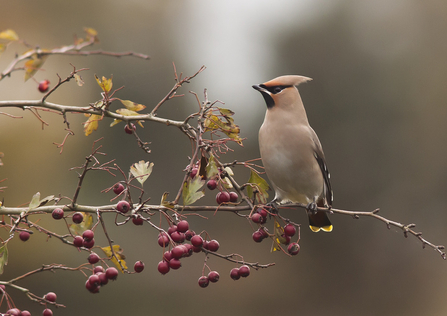We stalked along the lush verdant green, toadstools springing up at our feet. Streaked young blackbirds tore at the fruit of a holly bush, as pink-footed geese glided serenely overhead, honking as they flew. Before us stood a mighty oak, its leaves blushed orange in the absence of chlorophyll. Suddenly, a whir of wings made me turn my head, to see a large party of Scandinavian birds landing in the upper branches of the oak tree. As I focused my binoculars on an individual, its features became clear: a stocky, rosy peach body, spiky crest and coal-black eyepatch. The birds restlessly flitted from branch to branch, at the tips of their wings were small notches of white, yellow and crimson, like burnt wax.
From the group came a constant high trill, each call amalgamating with the next to form a recurring ringing. The birds were busy, not eating berries, but catching flies. Regularly they leapt from the trees to hover, then pluck an insect from the sky. This interesting behavior is more common on the Arctic pinewoods in which they breed, so a delight to see here. I quickly brought out my camera to photograph these hardy creatures, and for about an hour I just stayed to admire these wonderful waxwings!


